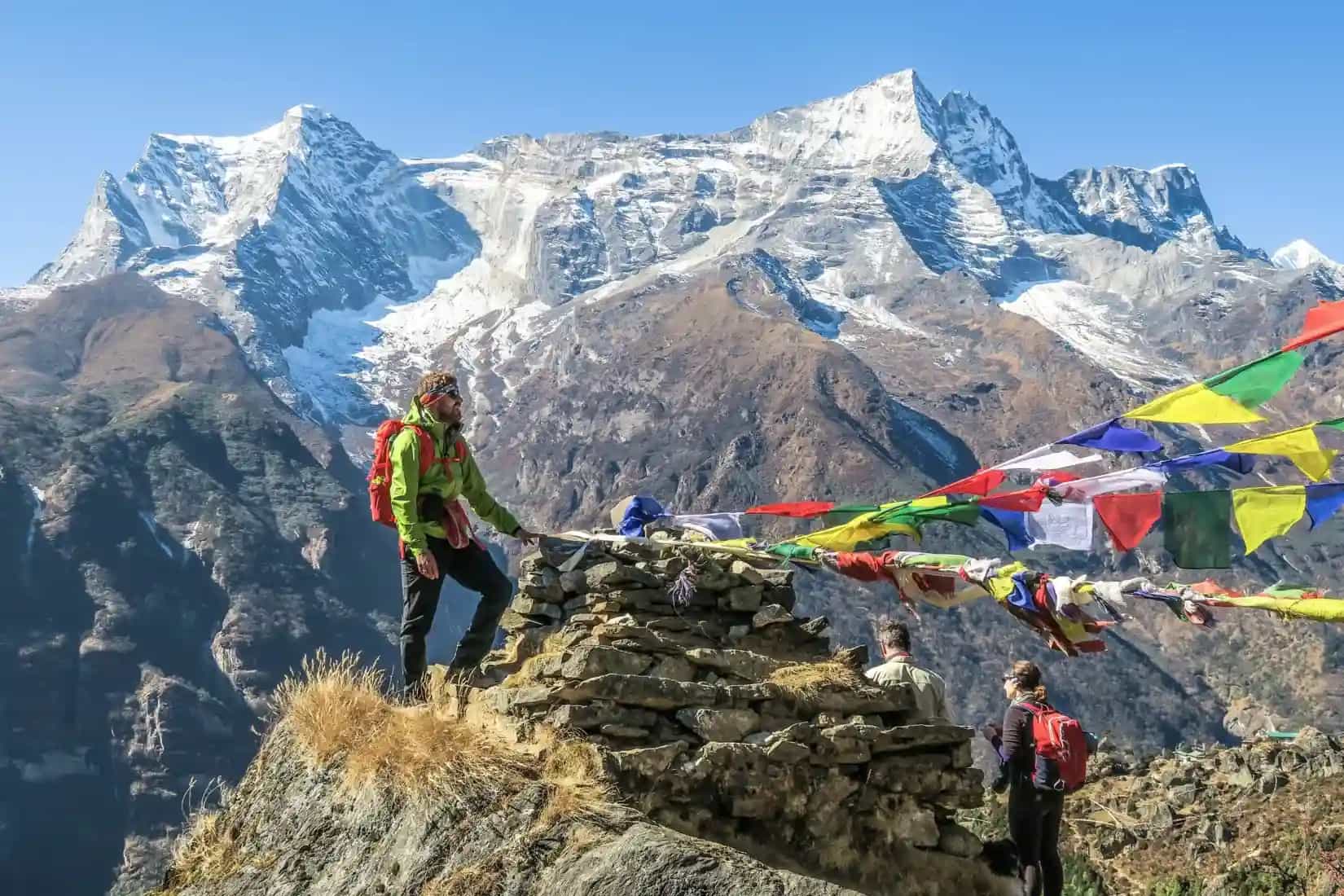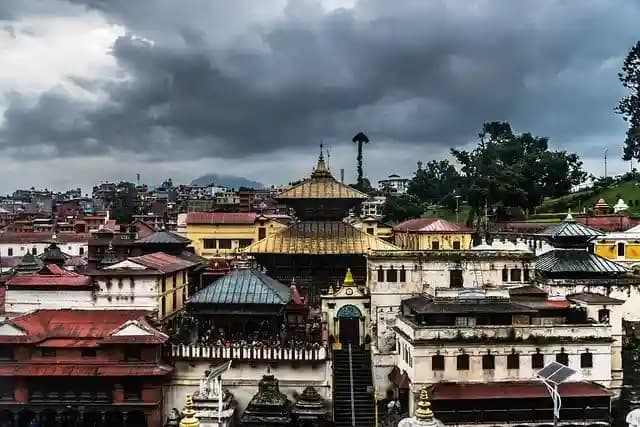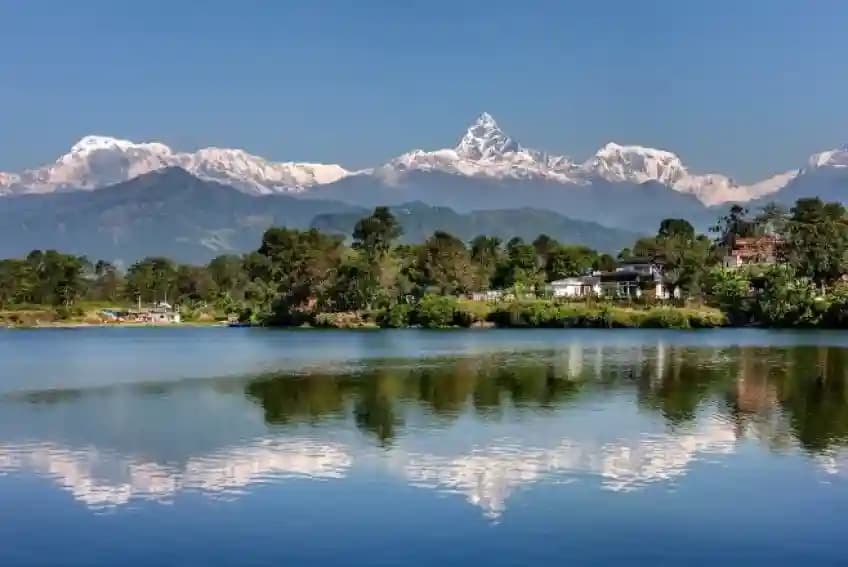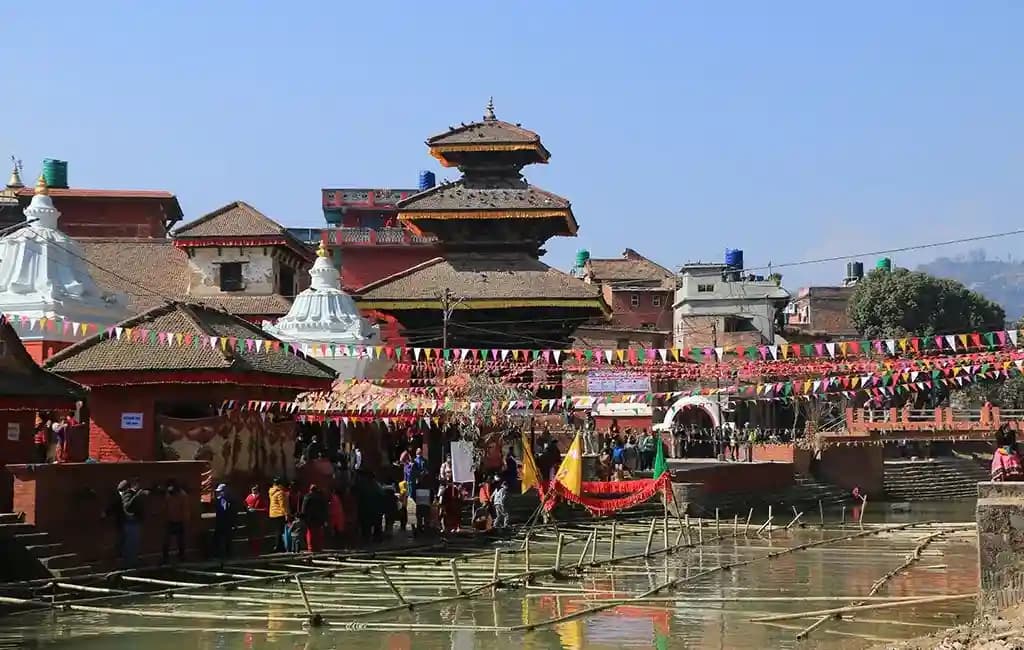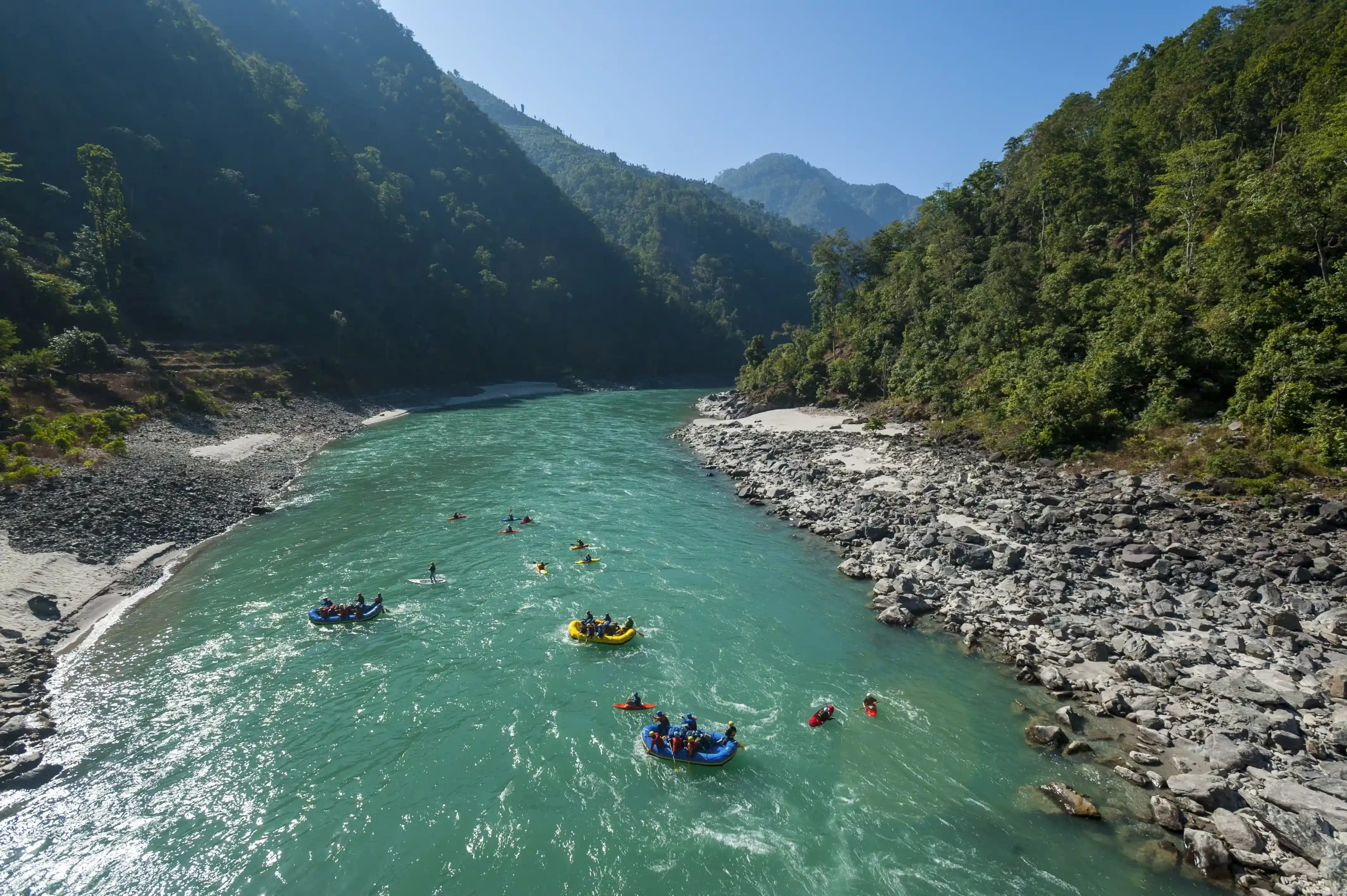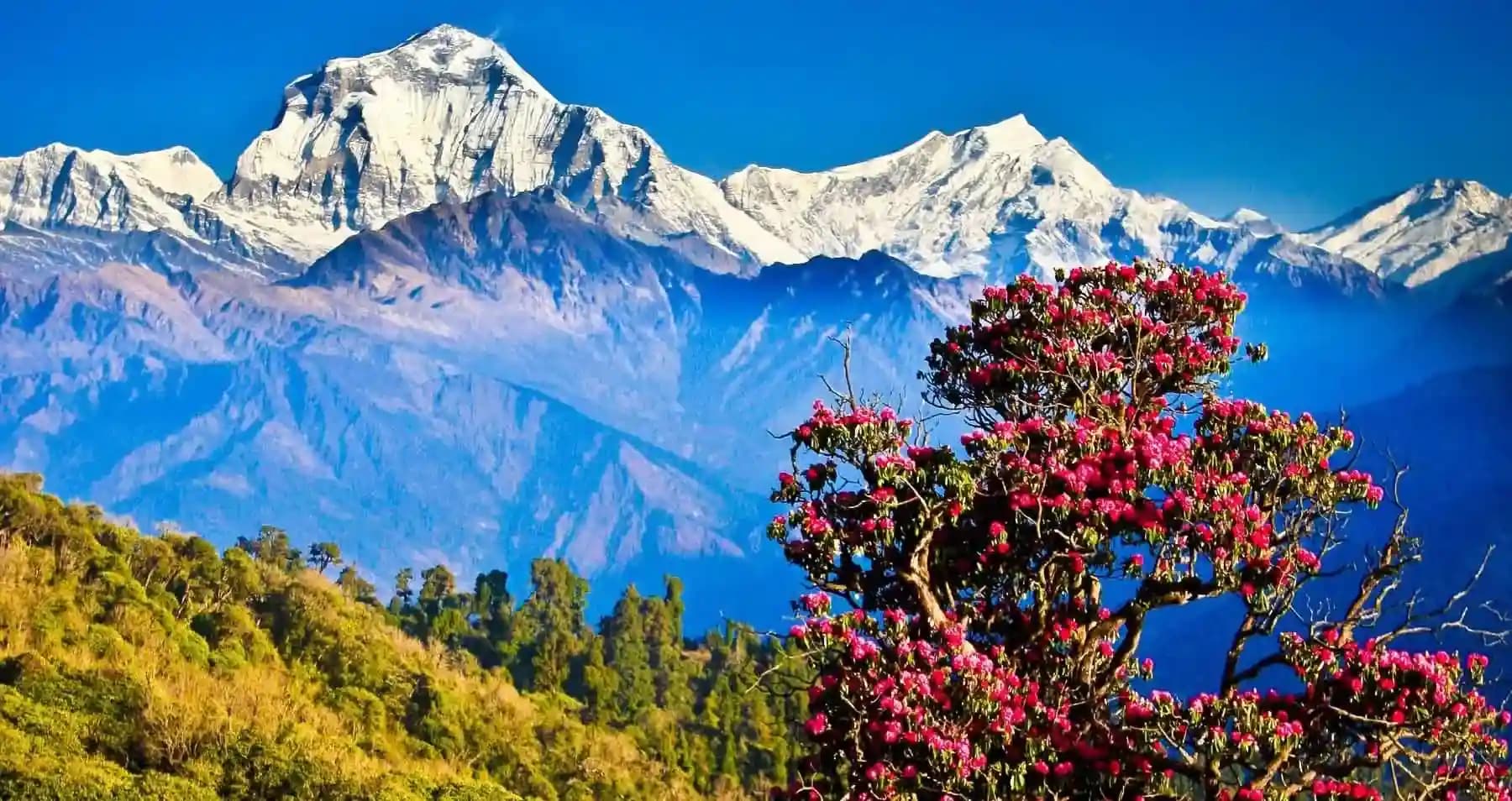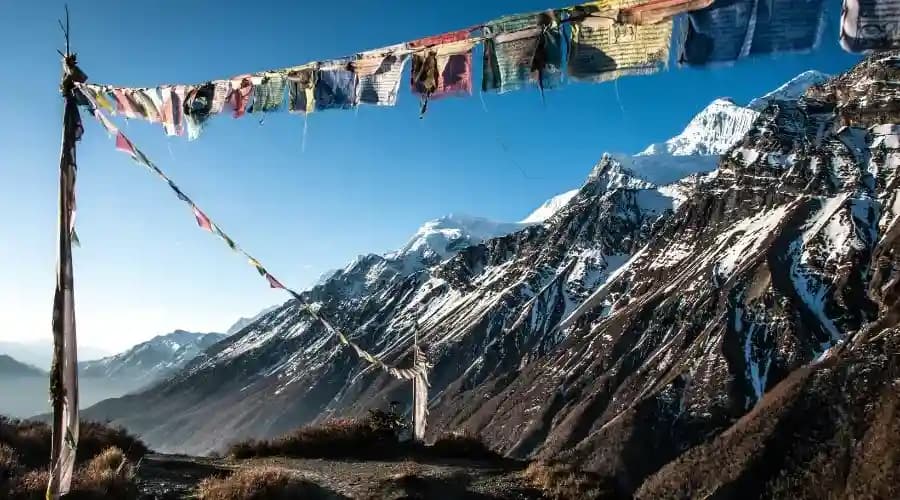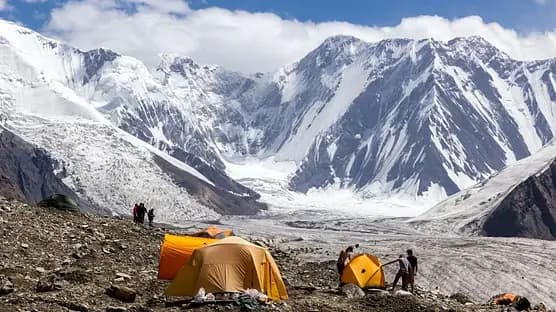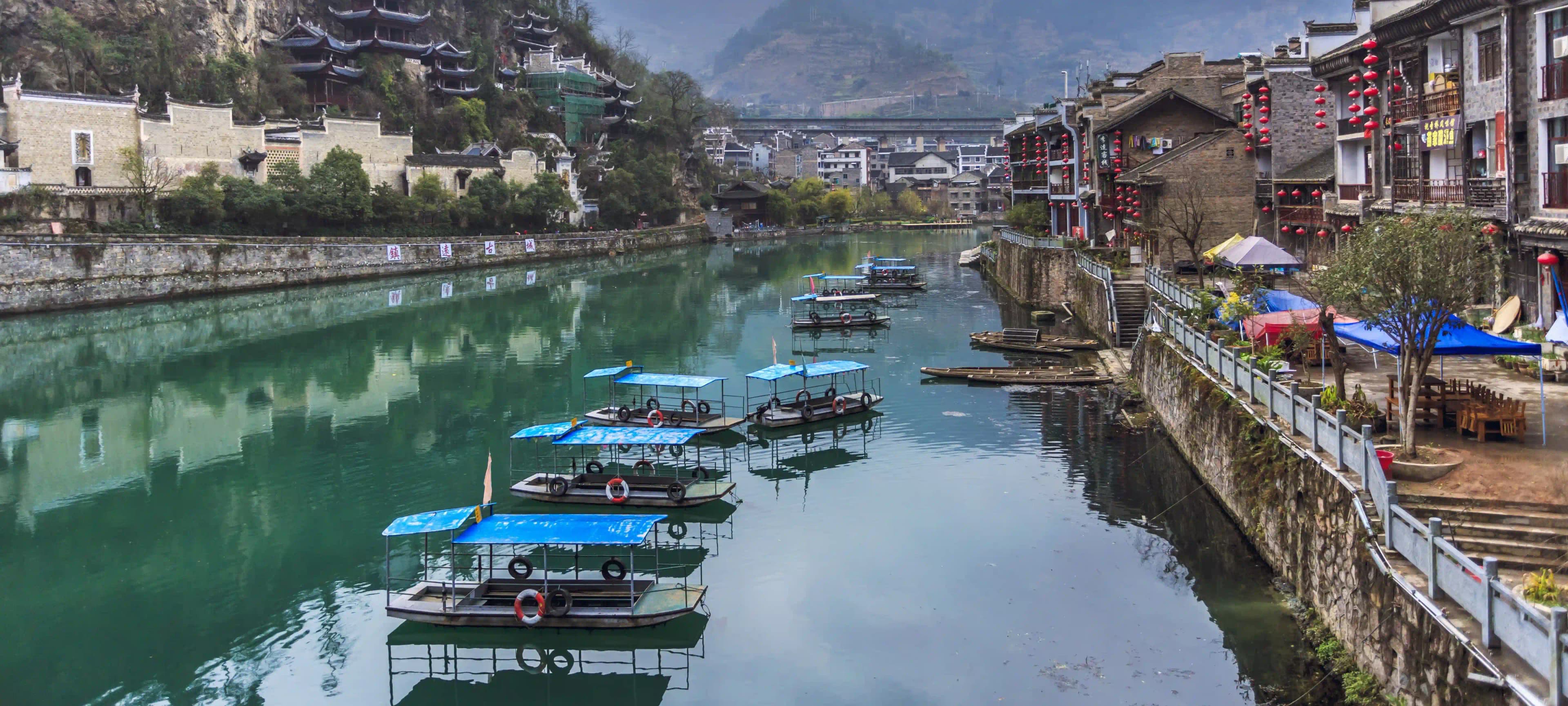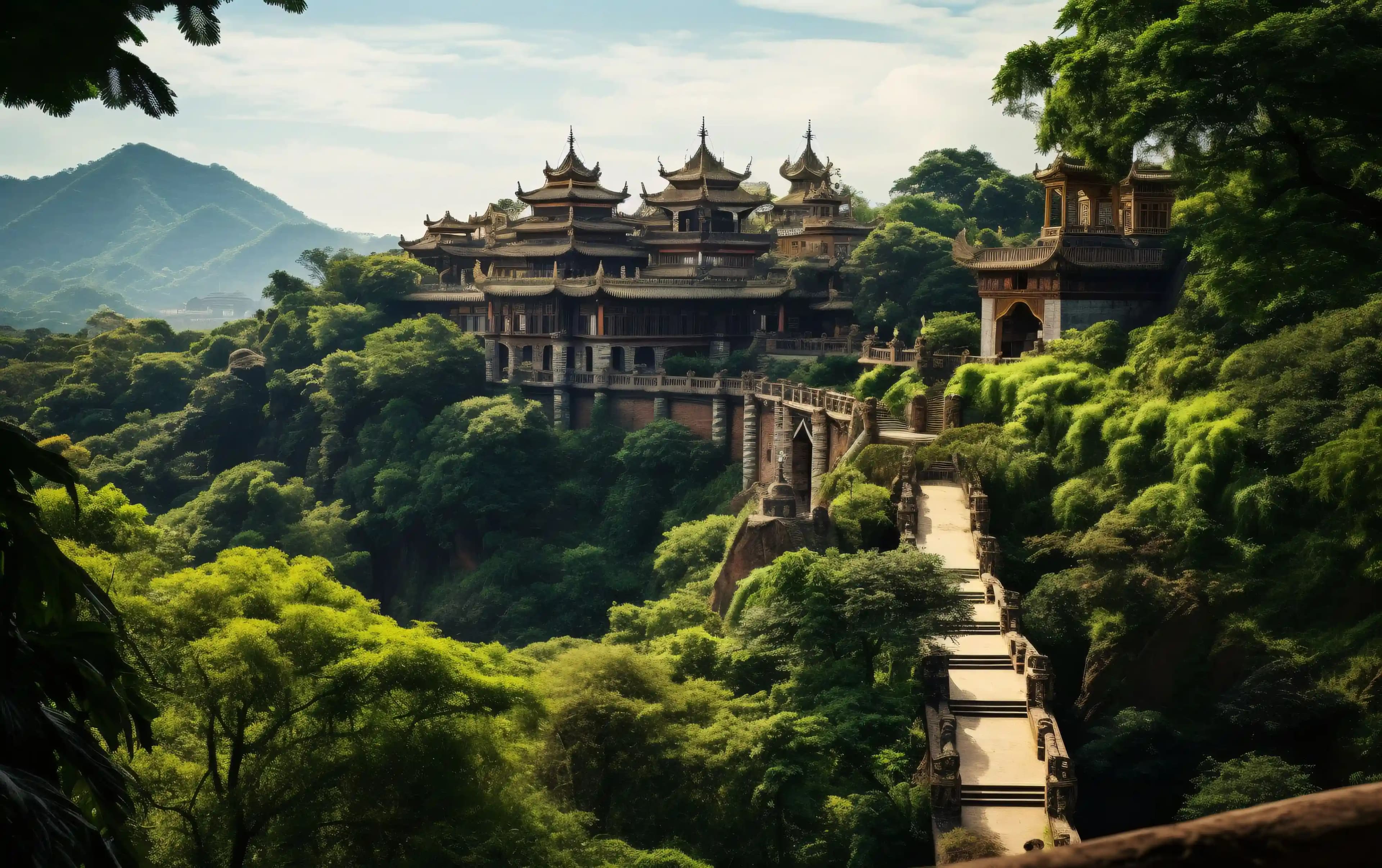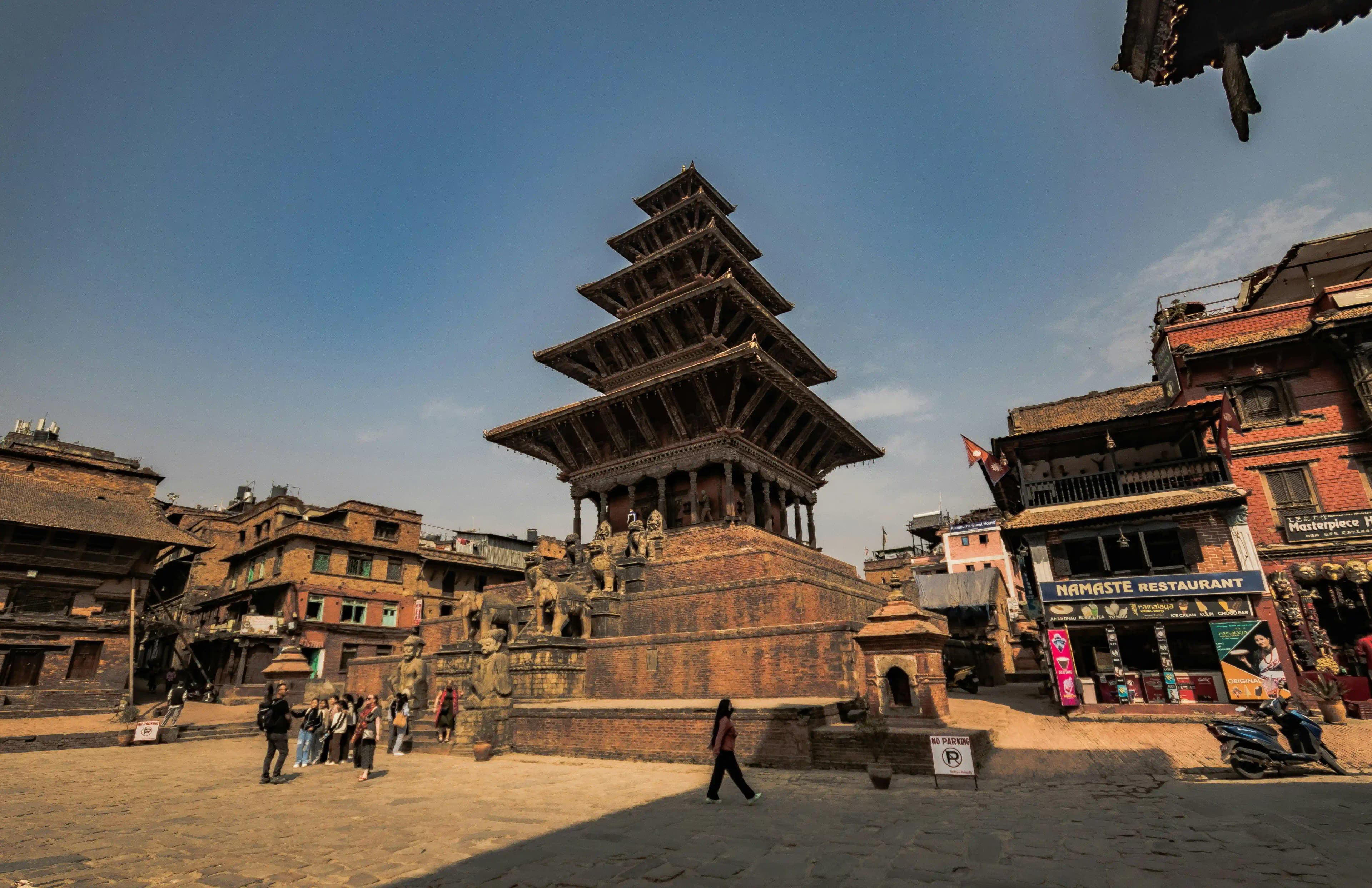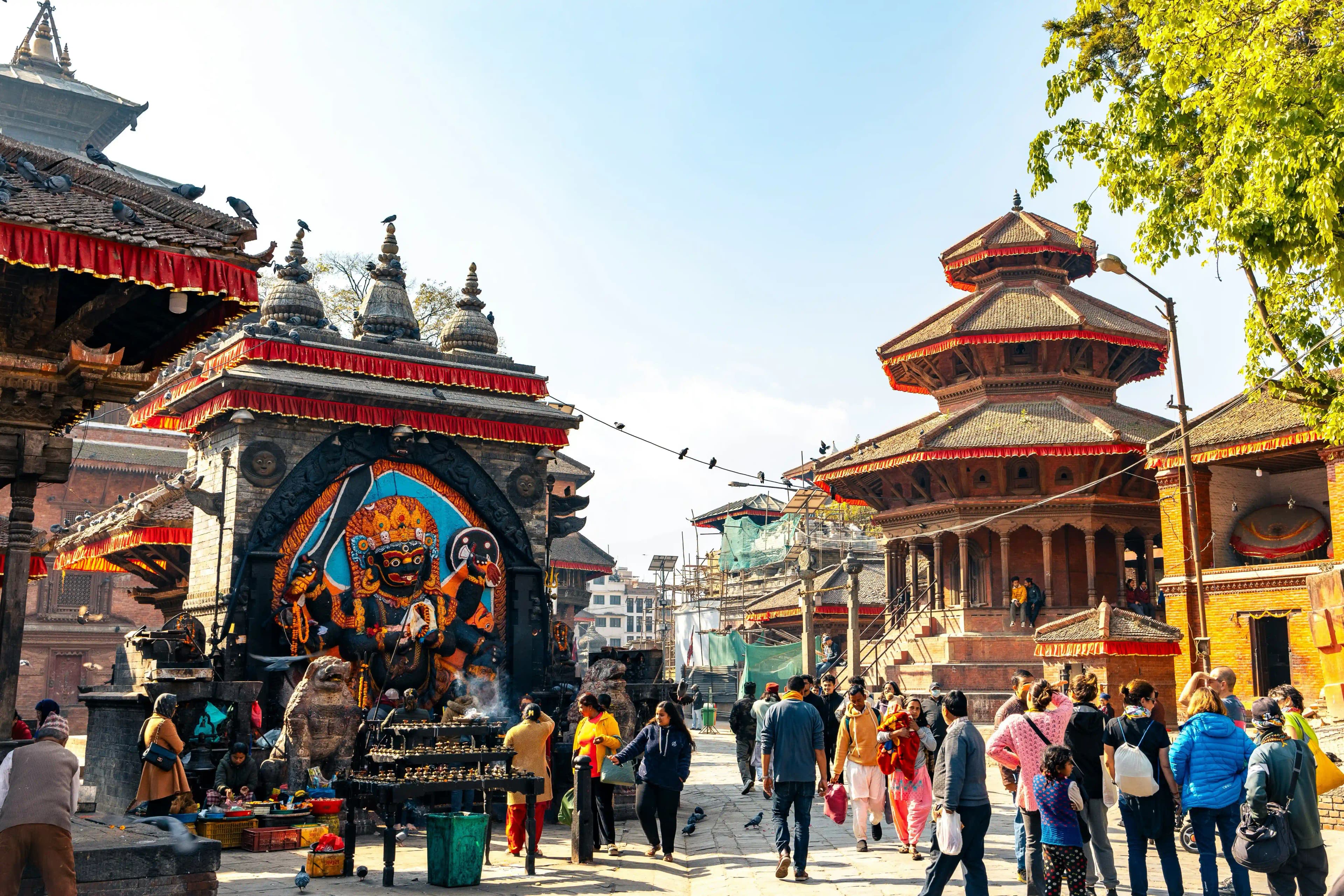Has standing beneath the world’s tallest peak, surrounded by incredible mountaintops with stunning views, ever been a dream of yours? If yer, then your dream can come true through this trip. The Everest Base Camp trek provides tourists the amazing opportunity to follow historical mountaineers on their paths while getting close to the greatness of the Himalayan mountain range. Worried about how difficult is the Everest Base Camp Trek is? Well, the good news is that this expedition is for everyone, for different experience levels, whether you are a beginner or an experienced hiker, as long as you have the right amount of dedication, you can be a part of it. Read on to learn more about the qualities that transform the trek into an unforgettable checklist destination.
Overview of the Everest Base Camp Trek

The review provides a quick preview of the Everest Base Camp trek.
- Trek name: The trekking destination goes by the name Everest Base Camp Trek.
- Duration: 12-14 days
- Adventure Type: High-altitude trekking
- Base Camp Altitude: Everest Base Camp trek height is 5,364 meters (17,598 feet)
- Best Months: March- May and September- November
- Difficulty Level: Moderate to strenuous
- Starting Point: Lukla, Nepal
- Accommodation: Teahouses and lodges
- Meals: Local Nepali cuisine and international dishes
- Location: Khumbu region, Nepal
- Total Distance: The round-trip Everest Base Camp trek distance adds up to approximately 130 kilometres.
- Trail Type: Out-and-back trail
How to Reach Everest Base Camp Trek?

Multiple steps lead travelers toward their goal of reaching Everest Base Camp from Lukla airport.
- Fly to Kathmandu: The principal entry point to Nepal is Kathmandu, which serves as its capital city. Major global cities reach Tribhuvan International Airport through their air transport connections.
- Fly to Luka: Reach Lukla Airport through a domestic flight that departs from Kathmandu, landing passengers in this scenic but challenging location.
- Begin Trekking: Trekking starts at Lukla since it functions as the initial location for the Everest Base Camp journey.
Additional Tips:
- Flight Duration: The travel time from Kathmandu to Lukla Airport lasts between 30 to 40 minutes.
- Weather Considerations: Weather patterns affect flights to a significant extent since Lukla Airport frequently experiences operational delays, thus travelers should have flexibility in their plans.
- Alternative Routes: An extended trekking experience can be achieved by setting out from Jiri, which gives additional days to the adventure duration.
Everest Base Camp Trek Cost
Planning an adventure becomes easier when you understand the complete expenditure of the Everest Base Camp trek. The below-mentioned cost analysis of Trekking at Everest Base Camp exhibits what is included and what is excluded from the package. The 3 types of pscksges are:
- Budget Package
- Standard Package
- Luxury Package
Inclusions:
- Domestic flights (Kathmandu- Lukla- Kathmandu)
- Accommodation during the trek
- Meals (breakfast, lunch, dinner)
- Licensed guide and porter services
- Permits (TIMS card and Sagarmatha National Park entry)
- Basic medical kit
Exclusions:
- International airfare
- Nepal visa fees
- Travel insurance
- Personal expenses (snacks, drinks, tips)
- Equipment rental or purchase
Additional Tips:
- Currency: Carry Nepalese Rupees for small purchases.
- Tipping: Contributions for guides and porters need to be tipped as per local tradition.
- Insurance: Make sure your insurance coverage includes high-altitude trekking during policy sign-up.
Trek Itinerary
A standard Everest Base Camp trek requires between 12 and 14 days to complete, along with acclimatization days for the journey. This 12-day itinerary provides detailed trekking information for smooth acclimatisation as well as breathtaking sights of the legendary Everest Base Camp route.
Day 1: Fly from Kathmandu to Lukla (2,860m) and Trek to Phakding (2,610m)
Your Everest Base Camp adventure starts through a thrilling 30-minute flight towards Lukla Airport which holds a reputation as one of the world's most dramatic airstrips. When you depart from Lukla, the trek leads you through stone pathways which cross multiple suspension bridges across the Dudh Koshi River. Exploring to Phakding takes between 3 and 4 hours of gentle descent from the starting point.
Day 2: Phakding to Namche (3,440 meters)
The trail on the 2nd day will present medium difficulty because it demands between six and seven hours of hiking through pine and rhododendron forested areas. Hikers pass through multiple hanging bridges while crossing to Sagarmatha National Park, including the landmark Hillary Suspension Bridge. After facing a strenuous climbing ascent, you will reach the Sherpa capital located in Namche Bazaar.
Day 3: Acclimatisation Day in Namche Bazaar
The goal during your Namche Bazaar stay is to handle altitude sickness while doing simple, nearby hikes. At an elevation of 3,880 meters, participants can visit the Everest View Hotel to witness breathtaking views of Everest as well as Lhotse and Ama Dablam. You should look through the Sherpa exhibition at their museum as you explore Namche Bazaar by visiting bakeries operating locally. A day of rest must happen before continuing through the ascending altitudinal zones.
Day 4: Hike from Namche Bazaar to Tengboche (3,860 metres)
The peaceful trail allows you to see a magnificent view of Mt. Everest, which appears between distant ridges. Reaching Tengboche reveals itself as the settlement where the Khumbu region hosts its largest Buddhist monastery. If you’re enough, then you might witness evening prayer ceremonies in Namche Bazaar.
Day 5: From Tengboche (3,860m) to Dingboche (4,410m)
Proceed downward to begin your day before crossing over the Imja River. Your path steadily gains altitude because it advances into higher elevation zones. The quiet village of Dingboche shows its stone-walled fields that provide spectacular sights of Island Peak and Lhotse.
Day 6: Acclimatisation Day in Dingboche
This day serves as another rest period to let your body adapt to the increasing heights. Explore Nagarjun Hill which reaches an elevation of 5100 meters as your training destination while enjoying spectacular sights. Spend time resting with lunch in Dingboche. The hike serves as training for the future heights which you will encounter during your journey.
Day 7: Trek from Dingboche to Lobuche (4,940 meters)
The track follows a smooth path that presents memorable views throughout the journey. Along the path, you will encounter the memorial in Thukla that honors climbers who tragically lost their lives on Everest. The thinning air accompanies eye-catching white mountain peaks, which continue to boost your enthusiasm. The trek takes around 5–6 hours.
Day 8: Trek to Everest Base Camp (5,364 metres) through Gorak Shep (5,170 meters)
This is the big day! As breakfast ends, you will begin hiking to Gorak Shep, where you store your things before continuing to Everest Base Camp. The icy and stone-covered trail leads to an astonishing experience of reaching base camp. At Gorak Shep, you should take a rest while waiting for your return to the base camp rock to take that precious photo before returning to Gorak Shep.
Day 9: Climb to Kala Patthar peak (5,545 meters), then Trek Down To Pheriche (4,280 meters)
Start your day before dawn to reach Kala Patthar, which stands as the tallest vantage point of the hiking route. Viewing Everest Base Camp together with the Khumbu Glacier emerges as a striking scene when the sun rises. The next descent leads you to the calm atmosphere of the small settlement known as Pheriche.
Day 10: The journey from Pheriche to Namche Bazaar.
Your descent now guides you back toward your starting point, following forests and suspension bridges. The air becomes richer in oxygen, thus the hiking becomes less challenging. As you spend your evening in Namche, take advantage of hot meals plus hot shower amenities.
Day 11: Walk from Namche Bazaar to Lukla
Your hiking tour draws to its completion on this day. The route mostly descends from the peak, yet requires continuous attention due to uneven stone trails. After arriving at Lukla, you can celebrate your Everest Base Camp success with your trekking companions and guides over a dance or with some hot, delicious food.
Day 12: Fly Back to Kathmandu
Travel to Kathmandu from Lukla by taking an initial flight during the morning hours. Once you arrive you can choose between relaxation or checking out the active city streets of Kathmandu before finding some peace and quiet.
The Everest Base Camp trek consists of much more than simple hiking because it enables travellers to walk through beautiful landscapes combined with cultural immersion and self-discovery. When you reach the base of Mount Everest, you will experience a remarkable accomplishment that only a few attain. Every adventure seeker seeking adventurous and thrilling challenges along with inspirational experiences, will appreciate this journey through the Himalayas. Start shopping and planning for the expedition toward the center of the Himalayas and lifelong of memories.
Frequently Asked Questions
1. How many days are required to complete the Everest Base Camp trek?
The complete travel duration extends to 12 to 14 days because it includes mandatory relaxation times.
2. How difficult is it to trek to the Everest Base Camp?
Climbers rate the trek to Everest Base Camp as moderate to strenuous because of its elevated conditions combined with daily distances of hiking between five to seven hours. Although a person needs no experience in climbing or peak skills to participate.
3. When is the best time to visit Everest Base Camp?
Travelers should visit during the months of March until May and September through November because the skies remain clear and temperatures remain mild.
4. How long does it take to trek to Everest Base Camp?
Tourists need to travel back and forth over a 130 km (81 miles) total distance.
5. What is the Everest Base Camp height?
The Everest Base Camp location reaches an elevation of 5,364 meters which translates to 17,598 feet above sea level.
